“After seven years of container gardening, I’ve learned how easily festive décor can stress out plants — from heat to smoke to glitter fallout.”
I was once the kind of person who casually spent thousands on Diwali firecrackers. Back then, Diwali wasn’t just one day of celebration — it lasted for a full week of excitement: buying new dresses, making sweets with family, and filling the streets with fireworks.
I wasn’t into just the light “girly crackers”; I went all out — rockets, atom bombs, and heavy fireworks with my neighbourhood friends. Looking back, I realize I played a huge part in making my street visibly smoky every Diwali night.
But everything changed the year I started container gardening at home. That Diwali began with the same festive vibe — until the excess smoke from my own fireworks wilted a few of my plants. Watching their leaves curl and dry within a day completely broke my festive spirit. I couldn’t light another cracker after that. Instead, I handed the rest of the fireworks to my neighbours.
That was the last Diwali I ever bought crackers. It’s been seven years now, and not only have I stopped, but many of my neighbours have also reduced their purchases after I shared how firecracker smoke affects plants and even pets.
Since the pandemic, I’ve noticed fewer people bursting crackers for days in my village. Economic reasons play a part, but I also see a growing awareness — people are choosing quieter, cleaner celebrations. And that’s a beautiful change.
Now, don’t get me wrong — I’m not against fireworks entirely. The sparkle and sound hold childhood memories. But when excessive smoke from fireworks fills the air in a short span, it definitely affects our balcony plants, indoor greens, pets, and even people with breathing issues.
So, do you think there’s no festive vibe without crackers? Absolutely not! Let me show you mindful and plant-safe Diwali decoration ideas that are full of charm and warmth — without the smoke, damage, or guilt.
Even if you love lighting a few fireworks, I’ll share simple, plant protection tips for Diwali so you can keep your potted plants safe while still enjoying the celebration.
Debunking the myth: You can make your balcony or garden look festive without harming your plants.
Promise: In this guide, I’ll share low-cost, low-smoke, and plant-safe Diwali décor ideas tested in real balconies and terraces — all based on my own hands-on experience as a container gardener.
Why Typical Diwali Decorations Can Harm Container Plants
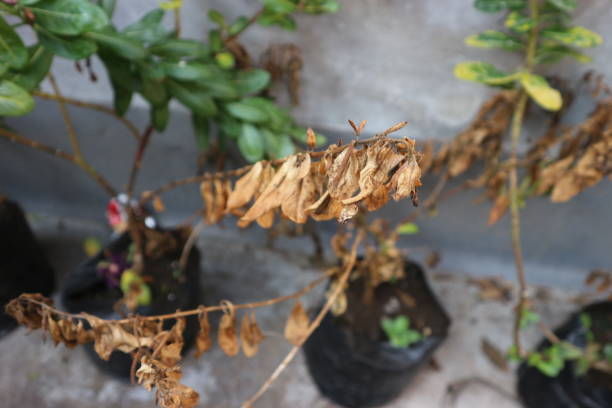
Diwali is truly the festival of lights. Even people who skip fireworks love decorating their homes with LED string lights, candles, and clay diyas to welcome warmth and positivity.
While Diwali has deep mythological roots, in India, it has evolved into a cultural celebration that transcends religion. Across the country, people celebrate it in their own beautiful ways — some perform Lakshmi Kubera Pooja to attract prosperity, while others worship Lord Vishnu for protection and blessings.
Everywhere you go, the festive air feels magical — lights twinkling, the aroma of sweets filling the home, and everyone dressed in new clothes.
In Tamil Nadu, especially in the southern regions where I grew up, Diwali celebrations have their own unique charm: bursting firecrackers from early morning, creating colorful kolams (rangoli), temple visits, and an afternoon non-veg feast. The day usually ends with watching the latest movie release — it’s a ritual that brings the whole community together.
But amid this joy, few notice how our decorations and fireworks can quietly hurt the living greens around us. The excess smoke from fireworks, continuous lighting, and rows of diyas burning near plants create sudden bursts of heat and air pollution. Even hardy plants begin to wilt after just a few hours of exposure, while delicate balcony plants show stress almost immediately.
Some people even decorate their plants directly — wrapping fairy lights around stems or sprinkling glitter on leaves to make them look festive. But here’s the truth I learned the hard way:
🌿 Myth-busting: Glitter rangolis, synthetic garlands, and chemical sprays don’t make your plants festive — they actually stress and suffocate them.
I learned this lesson after watching my favorite coleus lose its bright leaves — just one burnt leaf too many was enough to make me change how I decorate for Diwali.
Doing too much — whether with heavy lights, chemical glitter, or cheap fireworks — doesn’t enhance the festive vibe; it damages your home environment and the plants that make it lively. With mindful decoration and a few eco-friendly Diwali decor ideas, you can achieve the same vibrant look without harming your plants, walls, or floors.
Excess heat from high-brightness lights, chemical-based diya oils, and low-quality fireworks pollute the air, irritate the eyes and skin, and increase indoor temperature — even if you’re using an air conditioner. Some people even notice blurred vision or irritation after Diwali, often due to exposure to smoke and volatile chemicals.
So what’s the solution? Simple — switch to plant-safe Diwali decoration ideas that create the same festive sparkle without the side effects. Read on to explore eco-friendly lighting alternatives and low-smoke Diwali decor options that protect your plants, health, and wallet.
Choosing Plant-Safe Diwali Lighting – Low Heat & Low Smoke Options
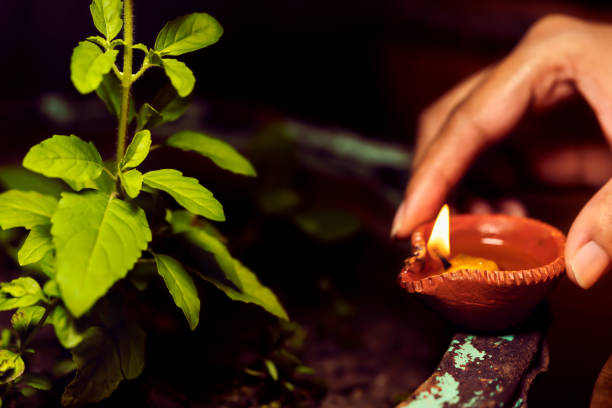
If you’re a plant parent, these Diwali lighting alternatives can save both your day and your plants. As someone who has spent years in container gardening, I know the post-Diwali struggle all too well — wilted plants, scorched leaves, and dull foliage that once looked lush.
Sometimes, it’s not even your own fireworks causing the damage — a single stray rocket or the neighbourhood firecracker smoke can harm your potted plants overnight. Even if you avoid fireworks completely, your plants still need protection from the heat and pollution Diwali brings.
Let’s talk about plant-safe lighting ideas that let your space glow — without the smoke, soot, or stress.
LED & Solar Fairy Lights – Gentle on Leaves, Great on Looks
First things first — plants aren’t decoration stands. Please don’t wrap or hang LED string lights or fairy lights directly on your plants. Even though LEDs are marketed as “cool lights,” the strip-type LED lights still emit mild heat that can cause leaf burn over time, especially when left on overnight.
If you love the cozy glow, try hanging the lights around your plant shelf or railing — not on the leaves themselves. This gives your space the same festive charm while keeping the plants stress-free.
Avoid burning candles or diyas too close to plants. Even low-smoke versions give off heat that can dry out leaves. If you really want to use them, choose small-wick diyas or low-flame candles or smokeless diyas and keep them at least a foot away from your greens.
Reduce the number of lights and diyas placed near plants — it’s not just about saving electricity; it’s about saving the greenery you’ve nurtured all year.
And one more important thing — skip glitters on plants. Those tiny particles clog pores, block sunlight absorption, and restrict natural water intake. If you love sparkle, pour that creativity into a floor rangoli instead — more color, zero harm.
When using diyas, go for quality lamp oils like gingelly (sesame) oil, which produces less smoke and soot compared to synthetic ones. Placing a small metal plate or tray under diyas also helps prevent wax or soot stains in your balcony or garden.
Replacing Diyas with Safe Alternatives – Low Heat Glow Ideas
Instead of lighting dozens of diyas or candles that increase heat and air pollution, try floating candles in a uruli bowl decorated with fresh flowers. This adds instant festive beauty — a natural, plant-safe decor idea that looks peaceful and elegant.
You can also switch to solar-powered Diwali lights or battery-operated LED lanterns. These low-heat, reusable options not only protect your plants but also reduce energy costs and make your space look thoughtfully styled.
If you’re planning a larger display of candles or diyas, simply move nearby plants to another corner. Remember, plants aren’t decor items — they’re living organisms. Placing them near open flames is like keeping them under constant heat without protection.
Once the celebration is over, clean your plant leaves gently and water them thoroughly to wash off any dust or chemical residue. It’s a small act that helps your plants recover quickly from post-festival stress.
👉 Read my blog on watering rules for easy container gardening care to keep your plants healthy and stress-free.
Using low-smoke candles, eco-friendly lamp oils, solar lights, and low-heat LEDs might sound like tiny changes — but these simple swaps make a huge difference. You’ll enjoy the same festive glow, protect your plants, and avoid the post-Diwali chaos of cleaning soot and saving wilted leaves.
DIY Eco-Friendly Rangoli & Decor Around Plants
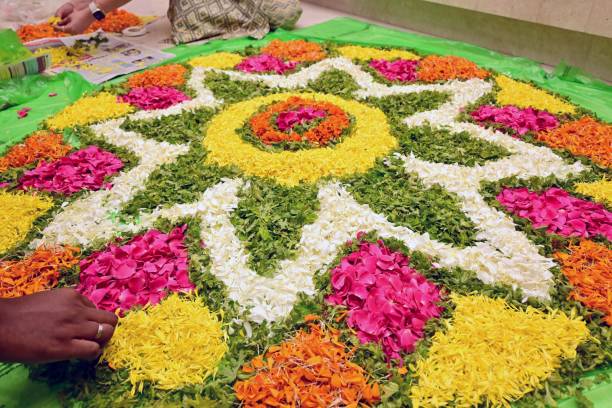
Sounds a little too much, right? But have you ever seen or experienced the Onam pookalam — the floral rangoli Malayalis create during Onam? It’s not only stunning but also eco-friendly, fragrance-filled, and bursting with natural colors. Unlike synthetic rangoli powders, these floral designs don’t stain floors or irritate your hands. It’s a refreshing, plant-safe alternative worth trying — and once you do, you’ll love the calm, earthy feel it adds to your balcony or garden space.
Using Petals, Leaves & Recycled Materials for Decoration
If you have marigold petals, hibiscus blooms, or even dry leaves lying around — reuse them instead of throwing them away. I often dry my hibiscus flowers and reuse the petals for a festive border around pots. Even wilted marigold garlands can be repurposed to create mini floral circles or pathways around plants.
Pro tip for windy balconies:
To avoid the mess of scattered petals, lightly spray water on the surface or use a shallow tray filled with a thin layer of sand or rice flour — it helps the petals stay in place. You can also use coconut shells or tiny bowls to hold petals safely without spilling.
This way, you get a vibrant, natural look that’s zero waste, low maintenance, and completely safe for plants.
Upcycled Planter Decor Ideas – From Old Pots to Diwali Art
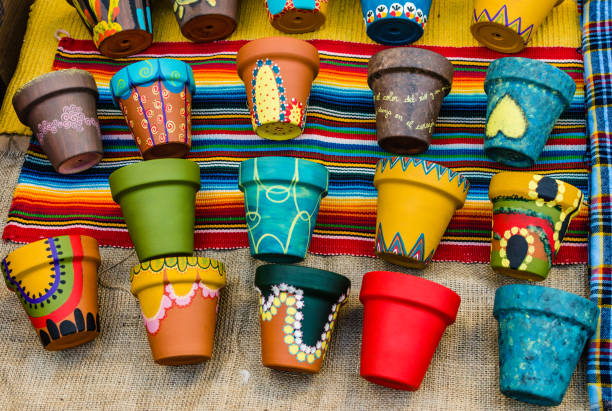
Instead of painting your favorite planters with chemical paints, try upcycling your old or unused pots for Diwali decor. This trick gives your garden an instant festive upgrade without exposing plants to toxic materials.
Here’s how I do it:
- Paint with natural pigments: Use turmeric (yellow), beetroot (pink), or red soil paste to tint terracotta pots. These natural hues are gentle, non-toxic, and can be washed off later.
- Wrap with jute or twine: If you prefer a rustic, cozy vibe, wrap the pot with jute rope, coir, or thick twine. It adds texture and warmth while keeping things sustainable.
- Layer double pots: Instead of painting the pot directly, place your plant pot inside a slightly larger decorative one. You can decorate the outer pot with cloth, lace, or even leftover festive wrapping paper. This keeps the real pot untouched and easy to reuse later.
- Add fairy lights safely: Wrap solar-powered fairy lights around the outer pot (not the plant). It gives a warm glow without generating heat or harming the leaves.
This simple makeover turns even the oldest pots into statement decor — while staying eco-conscious, budget-friendly, and plant-safe.
Low-Smoke & No-Damage Fragrance Options for a Festive Feel
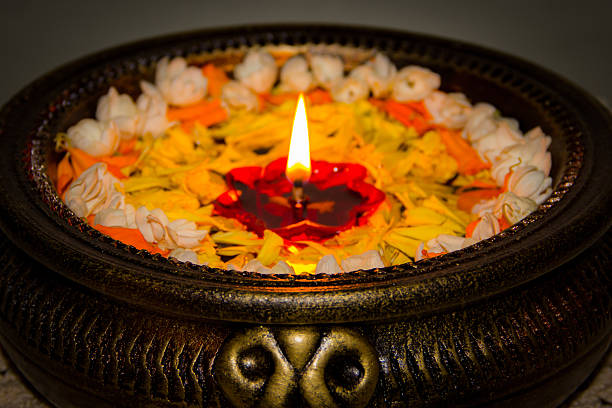
Festivals and fragrance go hand in hand — but not every scent is safe for your plants. Many traditional incense sticks and cones release heavy smoke that settles on leaves, blocking sunlight and affecting respiration. If you’re wondering how to keep that festive aroma alive without hurting your indoor greens, try these simple and effective non-toxic incense alternatives. They fill your space with warmth and calm while keeping your plants stress-free.
Essential Oils & Herbs Instead of Aggressive Incense
Skip those smoky incense sticks this Diwali. Instead, switch to essential oils and herbs that offer a cleaner, more natural fragrance.
- Cinnamon sticks – Add a few to a bowl of warm water or simmer on the stove to release a cozy, festive aroma.
- Clove water spray – Boil a handful of cloves in water, let it cool, and use it as a quick air-freshening mist around the home (avoid direct spray on leaves).
- Lemongrass diffuser – A must-have for plant lovers! Lemongrass essential oil naturally repels mosquitoes while keeping the air light and refreshing.
These natural Diwali scent ideas don’t release toxins or sticky residue, making them ideal for homes filled with plants, pets, and sensitive noses.
Safe Scent Zones – What Works Indoors vs. Balcony
Not all fragrance sources belong in every space. Here’s what I’ve learned from trial and error:
🌿 Indoors:
Use diffusers, essential oil burners, or herbal sachets in corners — away from plant shelves. Keep windows slightly open to circulate air and avoid heat or humidity buildup.
🌸 Balcony or Terrace:
If you love a stronger scent, place cinnamon or lemongrass-infused candles outside, but at least 1–2 feet away from pots. The gentle outdoor airflow disperses fragrance evenly without coating leaves in soot.
A small tweak like switching to herbal and non-toxic incense alternatives can dramatically improve your indoor air quality — helping both you and your plants breathe better during the celebrations.
Smart Placement Tips – Where (and Where Not) to Decorate Near Plants
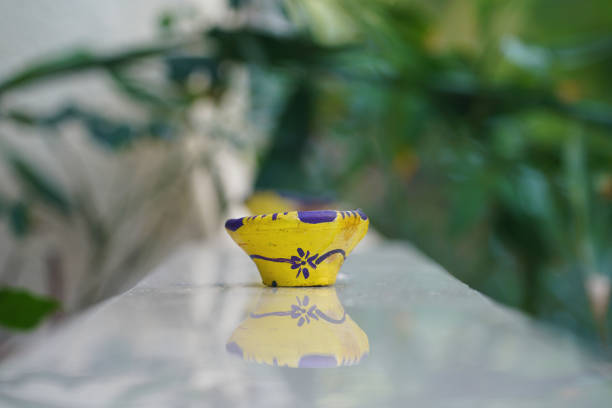
Festive decor can make your balcony glow beautifully — but if you’re not mindful, that same sparkle can scorch leaves or stress your plants overnight. Many plant lovers underestimate how close diyas, LED lights, or hanging lanterns can heat up nearby foliage. Whether you have a lush balcony jungle or a few container plants by the window, your layout matters.
Learning to balance beauty and safety is what I call true festive decor planning! Here’s how you can design a balcony decor layout for Diwali that looks warm and welcoming — without hurting your plants.
Safe Distance for Lights, Diyas, and Hanging Decor
- Keep at least 1–2 feet gap between any diya, candle, or LED light strip and your plant pots. This avoids heat stress and smoke settling on leaves.
- Never place diyas under hanging planters or trailing vines — heat rises and can dry out or burn foliage fast.
- If your plants sit near railings, use solar-powered or battery-operated lantern on the railing edges instead of wrapping them around pots. This small switch gives the same glow without the heat buildup.
- For balcony walls or shelves, try reflective backdrops or light-coloured drapes to bounce festive lights naturally — it enhances brightness without adding more bulbs.
My Two-Tier Setup – How I Avoid Heat Reaching Foliage
Here’s what I’ve done after losing a few leaves to heat damage during earlier Diwalis. I created a two-tier setup in my balcony garden:
- The top tier holds all the lights, lamps, and hanging décor — high enough to look festive but out of reach from my plants.
- The bottom tier stays plant-focused, clean, and safe — with a few reflective metallic planters that catch the light beautifully.
This way, I enjoy the Diwali glow without the post-Diwali wilted look. It’s practical, aesthetic, and saves me from last-minute plant rescues.
Extra Tip:
If your balcony is windy, shield diyas using transparent glass jars or lantern covers. It adds charm while preventing soot and heat from spreading toward your plants.
A mindful festive lighting setup for small balcony gardens can truly make the space come alive — minus the mess, heat, or smoke. Think minimal, think safe, and let your plants shine along with your lights.
Myth vs. Reality – Balancing Festivity and Plant Health
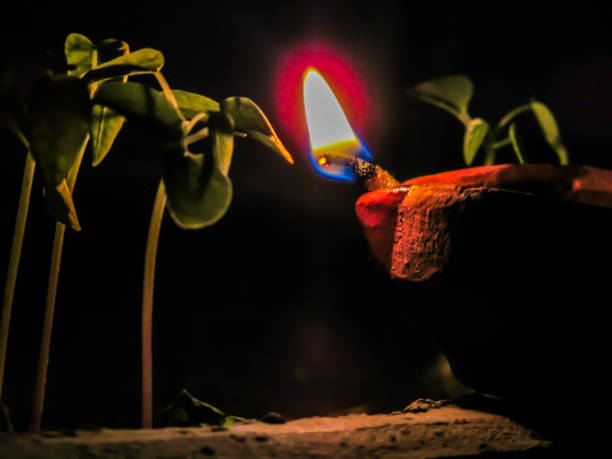
When it comes to Diwali plant care, there are plenty of myths floating around. One common misconception is:
Myth: “Lights, candles, and fireworks don’t harm hardy plants.”
It’s easy to believe this, especially when we see thick-leaved plants like money plants, hibiscus, or snake plants survive the year. But the reality is quite different:
Reality: Even hardy plants can suffer during Diwali. The heat from diyas, LED lights, and chemical-laden fireworks, along with smoke and dust, can cause leaf burn, dull foliage, or clogged stomata. Over time, repeated exposure can weaken even the toughest species.
Protecting Delicate Species – Ferns, Coleus, and More
Delicate plants such as ferns, coleus, and small indoor herbs require extra attention during the festive season:
- Relocate sensitive plants to safer corners or indoors, away from direct exposure to diyas, candles, or outdoor smoke.
- Create protective barriers like transparent glass jars, decorative mesh, or small plant tents to shield foliage from heat and dust.
- Clean leaves before and after Diwali with a gentle spray of water to remove any soot or residue that could block sunlight or airflow.
- Minimal lighting near delicate species: Opt for solar-powered lights or battery-operated fairy lights at a safe distance to maintain festivity without stress.
By understanding the difference between myth and reality, you can protect balcony plants during Diwali while still enjoying vibrant decor and a festive atmosphere. Even small adjustments — like moving sensitive pots or using low-smoke candles — can make a huge difference in plant health.
My Post-Diwali Cleanup Routine for Healthy Pots
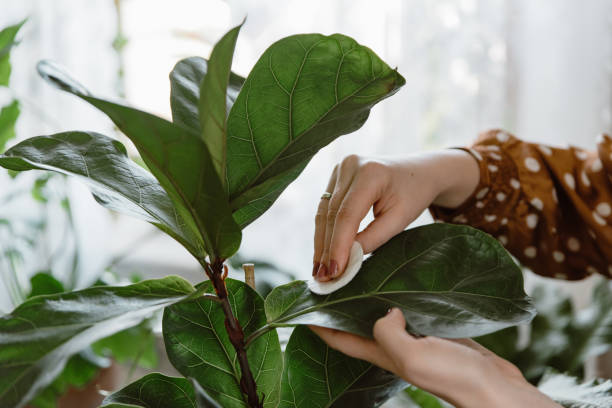
After the festive lights fade and the last diyas are blown out, your plants often bear the hidden effects of celebration — soot, wax, dust, and chemical residue. A proper post-Diwali plant cleanup routine can save your balcony greens and help them bounce back quickly.
Gentle Cleaning Methods for Soot, Wax, and Residue
- Dust and wipe leaves: Use a soft, damp cloth to gently wipe the foliage of indoor and balcony plants. This removes surface dust, soot, and residual candle or diya oil.
- Rinse pots: For potted plants, remove excess wax or soot from the pot edges using warm water and a soft sponge. Avoid harsh chemicals that can leach into the soil.
- Check soil surface: Clear any debris from the top layer of soil to prevent fungal growth or waterlogging.
Rehydrating Plants After Exposure
Diwali decorations, heat, and smoke can dry out leaves and soil. Restore plant health with these simple steps:
- Deep watering: Water thoroughly to rehydrate soil and flush out chemical residues.
- Mist foliage: For delicate species like ferns or coleus, lightly mist leaves to restore moisture and improve air humidity.
- Monitor stress signs: Keep an eye on leaf curling, yellowing, or drooping in the days after Diwali — these are early indicators of residual stress.
Bonus: Natural Anti-Fungal Rinse Recipe
To prevent fungal infections after the festival:
Ingredients:
- 1 tsp neem oil
- 1 liter of water
- Few drops of mild liquid soap (optional)
Method:
Mix ingredients in a spray bottle and gently spray on leaves and stems once a week post-Diwali. This eco-friendly anti-fungal rinse helps ward off pathogens while keeping your plants safe from chemicals.
Wrap-Up – Celebrating Diwali Without Harming What You’ve Grown
Diwali is a time for joy, light, and celebration — but as a container gardener, you’ve learned that even a small oversight can stress your plants. Mindful decorating doesn’t mean compromising the festive vibe.
Instead, it’s about balancing beauty with plant health, using low-smoke candles, LED lights, eco-friendly rangoli, and natural scents to create a warm, safe environment for both your plants and family.
Over the past seven years, I’ve made my fair share of mistakes — from wilting coleus leaves under stray firecracker smoke to accidentally leaving lights too close to delicate ferns. Each mishap taught me the value of planning, safe placement, and post-festival care.
By following these real-life, budget-friendly, and plant-safe Diwali tips, you can:
- Keep your balcony and indoor plants healthy
- Enjoy a festive glow without excess heat or smoke
- Save time and effort in post-Diwali cleanup
If you love growing plants through every season and want more practical gardening tips, join my newsletter! You’ll get my free Soil Mix Ratio PDF, specially crafted to keep your pots thriving — even after festivals.
Celebrate mindfully, enjoy the lights, and let your plants flourish alongside your festive spirit.

